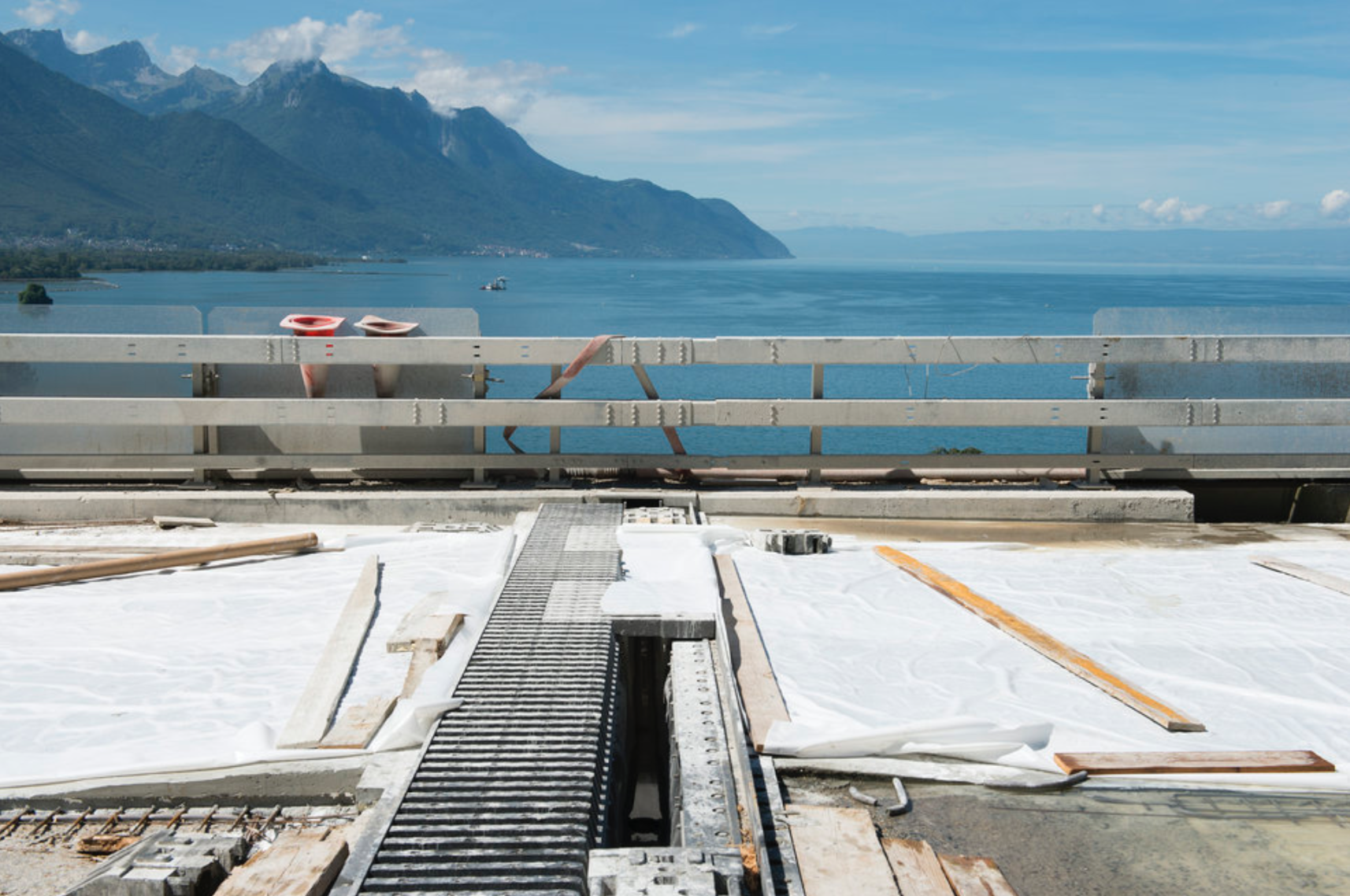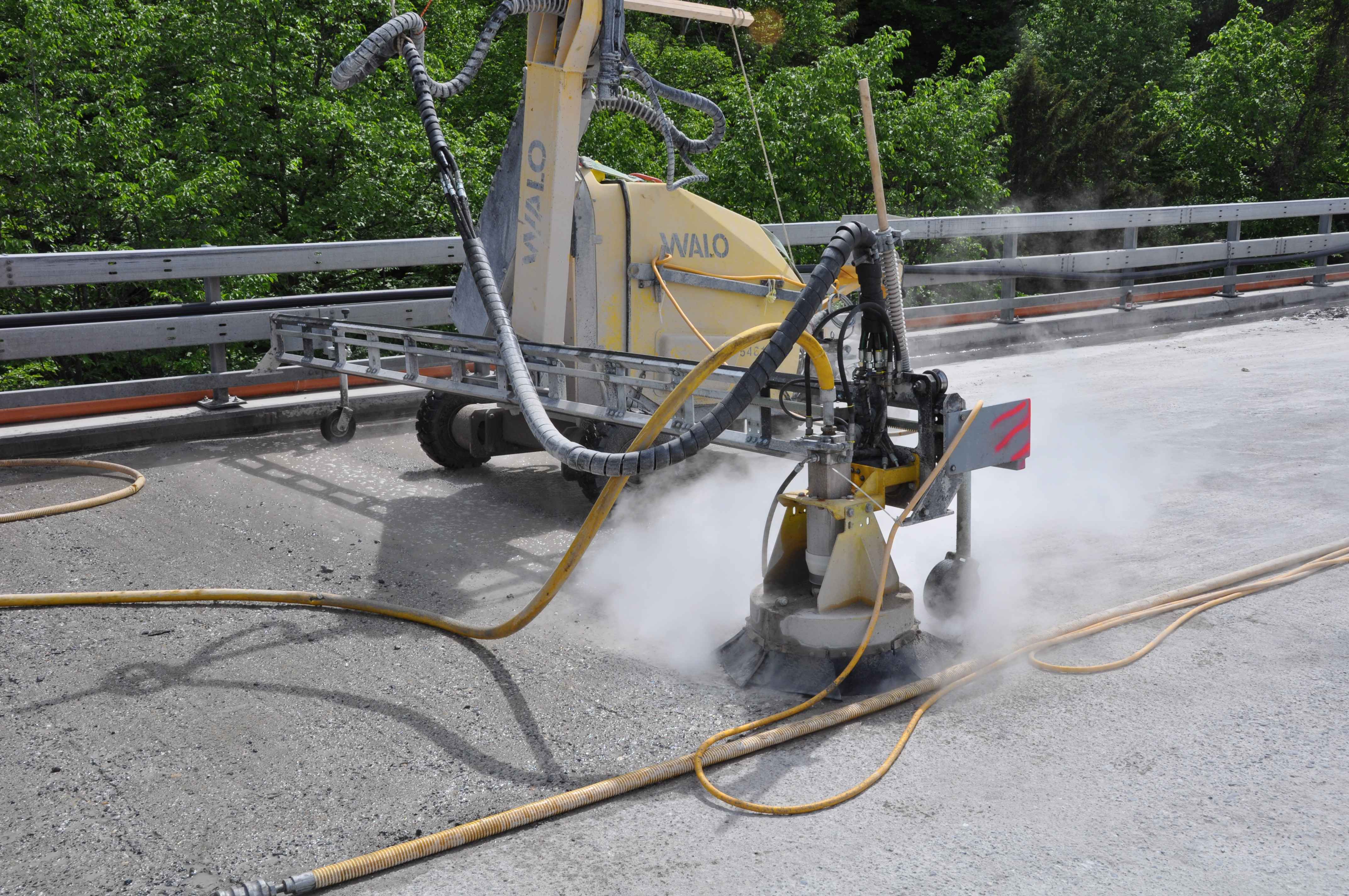
Updated 7/10/2020
Current figures suggest that one in three U.S. bridges are structurally deficient and in need of repair work. Bridge rehabilitation typically occurs when a bridge receives a GCR Rating of 4, suggesting section loss on the deck, and when supporting superstructure or substructure is evident. Innovative concrete solutions are necessary to preserve and strengthen the integrity of bridges and to support the fulfillment of safety standards.
Hydrodemolition
Due to the vulnerability of deteriorating and structurally deficient bridges, there is a need for selective demolition, which is defined as the removal of damaged or low-strength concrete while retaining the healthy concrete. Hydrodemolition is an efficient, cost-effective, and precise method that removes deteriorated concrete with high-pressure water.Additionally, it assists the preparation of a bridge prior to the placement of the deck overlay and provides a highly bondable surface for superior outcomes. Hydrodemolition is a safe, controlled, and non-impact concrete removal solution that has no risks of microcracking of the existing substrate compared to other traditional concrete milling and scarification methods. Specifically, Harries (2013) recommends that once the desired concrete is removed the remaining aggregate exposure “be cleaned and prepared to accept the overlay” which can be achieved by saturated-surface-dry (SSD).
Competing Techniques of Concrete Demolition
Traditional demolition techniques such as milling, hydraulic hammering, and jackhammering leave microfractures on the surface of the concrete. While hand-held jackhammers may be beneficial to use in areas that are inaccessible to hydrodemolition equipment, they allow vibrations to travel through the concrete which can loosen the rebar. In contrast, hydrodemolition removes concrete in “a controlled manner" without vibration, which reduces the risk of microcracking. Silfwerbrand (2009) states that hydrodemolition is an ideal concrete removal method due to its ability to create a "greater exposed aggregate area" which results in "enhancing subsequent overlay bond".
Benefits and Drawbacks of Hydrodemolition
Benefits
Hydrodemolition eases the concerns surrounding vulnerable bridges and their removal of damaged concrete through the many benefits it provides:
- Limited noise pollution
- Reduced dust pollution
- Water can be collected for treatment and recyclable for future projects
- Cost-effective
- Time-effective
- No microfractures
- High-quality bonding surface
- Uniform concrete removal
- No damage to rebar while removing rust and corrosion from steel
- Reduced risk of injury for operators
Drawbacks
Here are several factors to keep in mind when looking into hydrodemolition of concrete for your project:
- Water runoff if not collected properly
- Water and sewage department requirements
- Increased risk assessment when vertical and overhead work is conducted
How it Works
There are three methods in which hydrodemolition removes concrete:
- Hydroscarification - Ultra-high pressure water removes top-layer concrete. Depth of removal falls between 1/4" to 3/4".
- Partial depth removal - Selective removal of concrete that exceeds a depth of 3/4".
- Full depth removal - Complete removal of deteriorated concrete.
Water Pressure
To remove concrete, a hydrodemolition machine uses high-pressure and ultra-high pressure (UHP) water jets. High-pressure water jetting falls around 15,000-25,000psi (pounds per square inch) while UHP water jetting falls in the range of 25,000-55,000psi, which exceeds velocities of 1,500mph. In comparison, hydrodemolition uses about 20 times the strength of a typical household pressure washer.
Equipment Used
Hydrodemolition typically uses automated equipment, such as a robotic cutting tractor which controls the water jets and thus the uniform removal of concrete. High-pressure water pumps and support trailers also aid the process to collect water and transport water and fuel tanks. Operators are required to wear protective equipment to limit the risk of injury from debris.
 Image source: WALO
Image source: WALO
Water Treatment
Water pumps used in hydrodemolition projects remove wastewater for treatment for optimal sustainability and environmental outcomes. It is essential that the pH value of the water be regulated before water can be disposed. The United States Environmental Protection Agency (EPA) defines effluent as, “a discharge of pollutants into the environment, partially or completely treated or in its natural state. Generally used in regard to discharges into waters.” Hydrodemolition water treatment allows treated industrial wastewater and solid materials to be recycled and used in future projects. As innovation moves the industry forward, innovative solutions will work towards minimizing the production of wastewater.
Where is Hydrodemolition Best Used?
According to the International Concrete Repair Institute, hydrodemolition has been used on projects such as, “bridge decks and substructures, parking structures, dams and spillways, water treatment facilities, tunnels and aqueducts, and nuclear power plants”. Hydrodemolition is beneficial to use in bridge rehabilitation, as it is a safe non-impact alternative that reduces the risk of microcracking. This process can also be conducted in remote areas as projects can be serviced by tank trucks and well water.
WALO, who uses our Ultra-High Performance Concrete (UHPC) rehabilitation methods has over 20 years of experience with hydrodemolition projects. Hydrodemolition provides an ideal bonding surface when used before the application of Ultra-High-Performance concrete. During rehabilitation, the two together result in great durability and provide longevity for the bridge.
Conclusion
The U.S. infrastructure continues to need innovative solutions to rehabilitate and preserve structurally deficient bridges. Hydrodemolition provides an efficient and safe alternative to remove concrete from vulnerable structures. Due to the superior bonding surface that hydrodemolition produces, the use of UHPC can provide additional durability to better strengthen our depreciating bridges, thus moving the industry forward to solve our deteriorating infrastructure problem.
Our team constructs infrastructure projects by combining both the strengths and benefits of Hydrodemolition with Ultra-High Performance Concrete with a specific focus on:
- Bridge overlays
- Other infrastructure rehabilitation & preservation solutions
If you're looking for an innovative preservation contractor, reach out today to learn how hydrodemolition and UHPC can be applied to your project!


